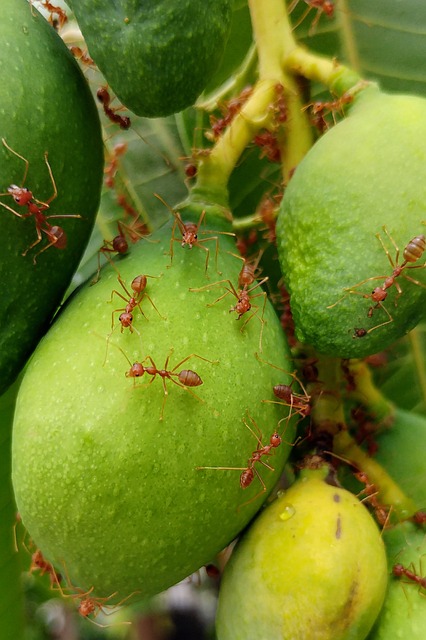
Antipathy or Admiration...
How do you feel about Ants?
FLORA AND FAUNA AND THE FOREST WORLD
Joan
9/15/20234 min read
I have heard it said that 'come the Apocalypse' ants will be the one creature to flourish. If you have ever stopped to watch a colony of ants at work, you will surely agree. A supreme example would be the Matabele ant of Southern Africa , which takes its name from the warrior like Matabele tribe from Zimbabwe. Their formidable war like strategies are certainly awe inspiring. When our boys were small we took them to visit their grandparents in the brave new country of Zimbabwe, and spent two nights in a small cottage in Hwange National game reserve. We saw giraffe, elephant, meerkats , buffalo, lions and a lone , lean cheetah. But perhaps the most memorable of all the wildlife that we encountered were the Matabele ants, who regularly formed a long trail in the dirt path in front of our lodge. We would watch them in fascination. Our youngest son kept a diary of that visit, and I well remember his charming drawings of these industrious insects. How I regret not keeping them.
Matabele ants are up to 2cm long and live in enormous colonies of up to 20 million members. They feed exclusively on termites, and set up raiding parties to kill and extract these insects. However the termite soldiers can retaliate by biting off ants' limbs. Studies have revealed that if an ant becomes injured it will be carried back to the nest where the wound will be licked and the ant carefully tended. Moreover, one study found that if an ant is wounded it will play up its injuries to attract attention so that it can be rescued. However if it is mortally wounded it will refuse to cooperate , so that its fellow ants will not waste their efforts.(source National Geographic magazine.) Is that not amazing?
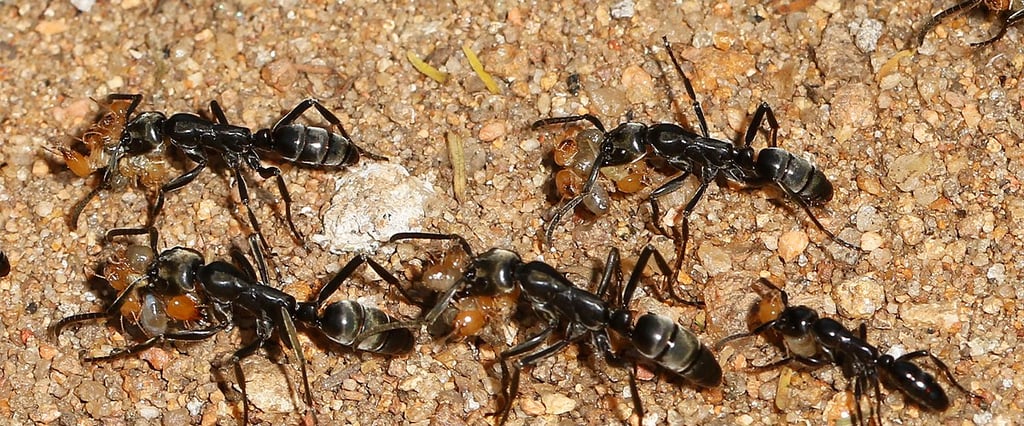

In early summer we love to watch a colony of black ants which lives close to our pool. The ants are over 1cm in length and file busily around the edge of the water all day long . Unlike the Matabele ants they seem passive, and I have never been stung. It broke our hearts one year when they appeared to sicken and die, and we suspected that they had been poisoned by some gîte guests. Fortunately they have since returned in number. As they pass each other they seem to pause to communicate head to head, and I am informed that they are relaying information via pheromones. Occasionally one may be aided by a second as it tries to manipulate a trophy, many times its own size, back to the nest. In the adjoining photograph you will see an ant trying to deal with a dead grasshopper. I watched it as it tried 'every which way' to find the perfect position with which to drag its prey home. In the end it succeeded, although subsequent progress remained slow.

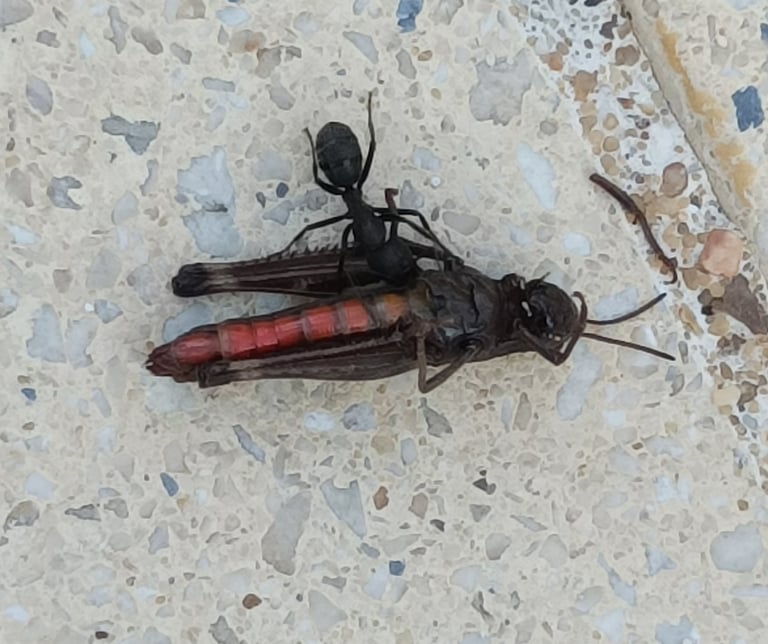
But however fascinating ants may be, at times they can be a real nuisance. That is the case at the moment where we currently have an ant invasion in our home. Whereas Matabele ants are very large, these ants are so tiny that one can easily miss them. They scurry about like tiny grains of sand. Their nuisance value comes from their number and persistence, as they continually search for food. We do not wish to poison them, so our main line of attack is to ensure that all food preparation areas, floors and tables are constantly kept clean. Today however as we ate lunch, I spotted a flake of bread crust that I had just dropped, moving across the table cloth in front of me. It was many times bigger than the ant which bore it. In the adjacent photograph, the white spots on the cloth measure 12mm, so you may estimate the size of the ants. In the third photograph these same ants are swarming over a 20mm piece of raw onion which I accidentally dropped onto the conservatory floor. The nuisance value of these , the tiniest of ants, is indeed in inverse proportion to their size. But hey...one can't but admire their pluck!
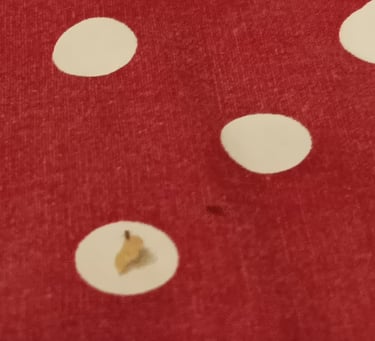


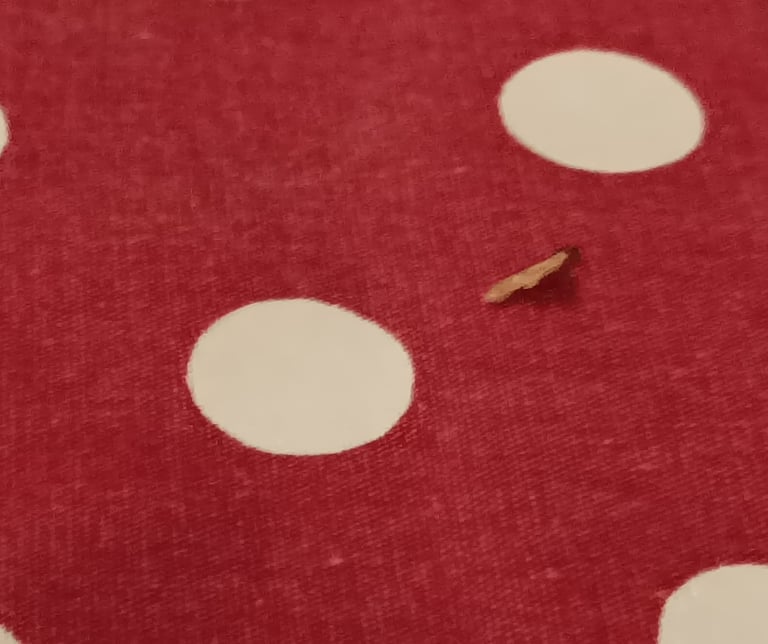
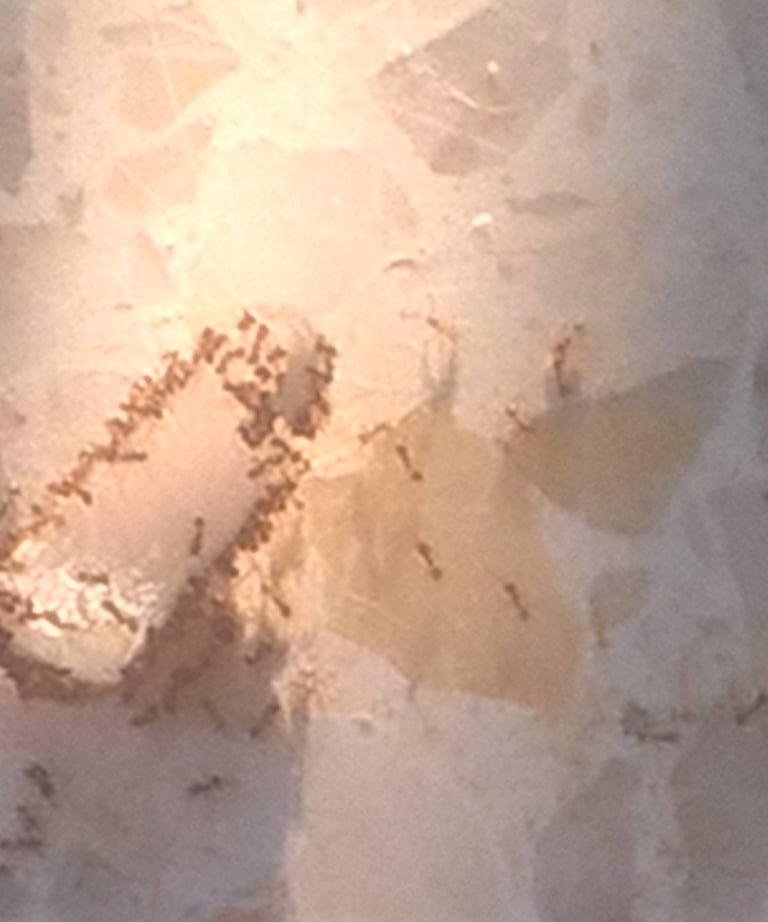

But whether ants amuse or exasperate us, we cannot help but feel dismay at the recent warning of an inevitable invasion of red fire ants into Europe. These ants have recently been discovered in Sicily and are likely to spread. They are considered to be one of the world's most destructive and costly invasive species.'They not only have a very painful bite but they prey on invertebrates , destroy native plant species and rob native ants and other insects and herbivores of food. Our little ant friends around here had better watch out.

